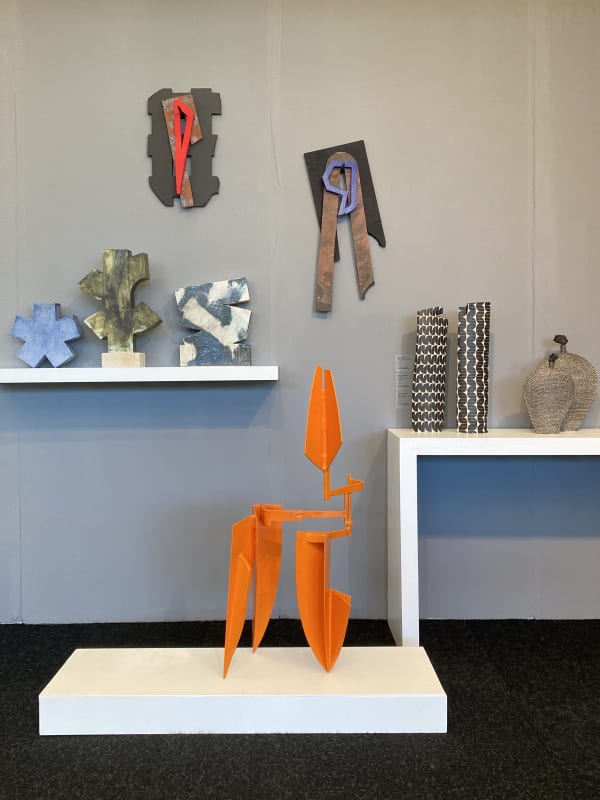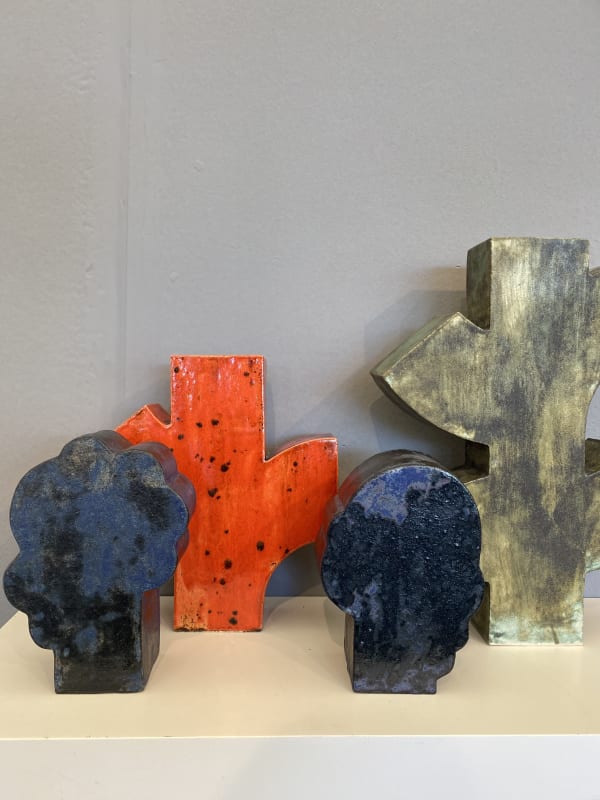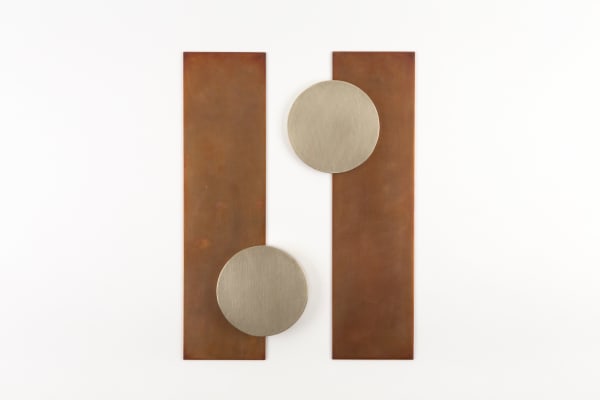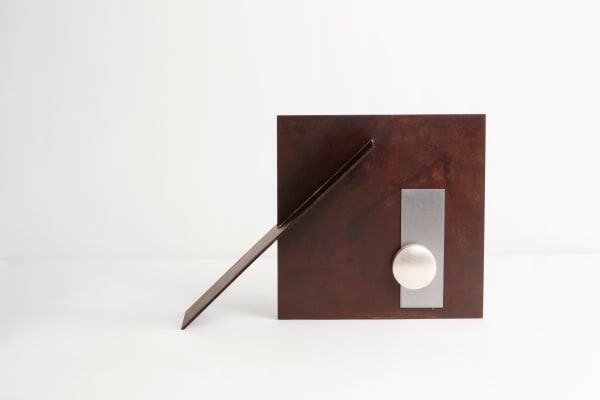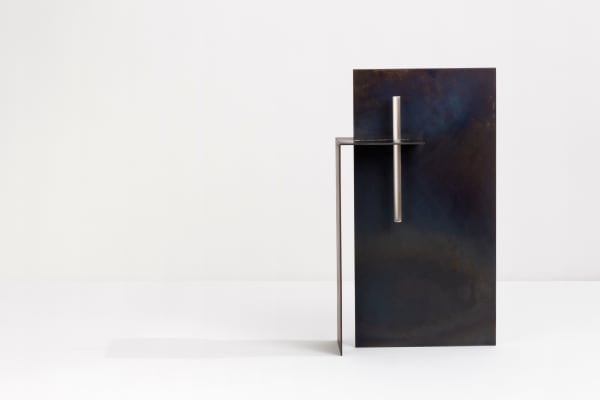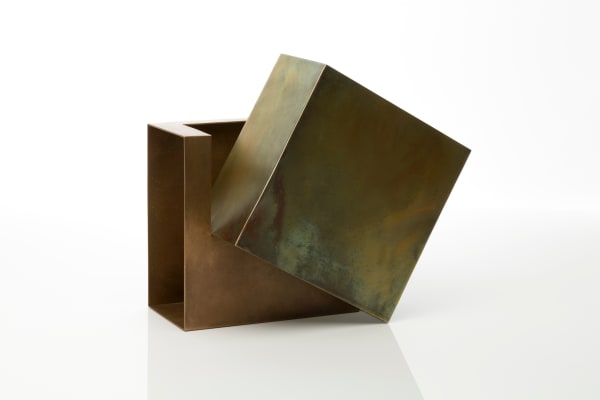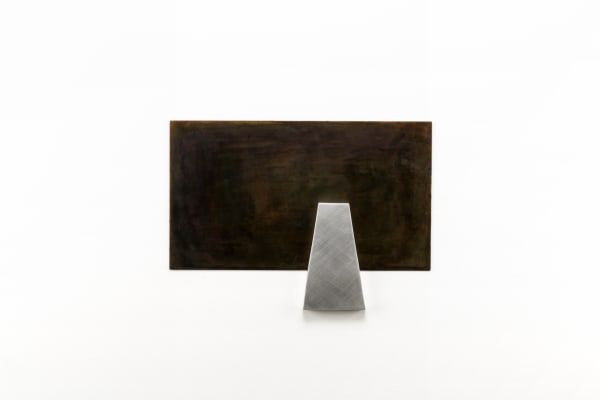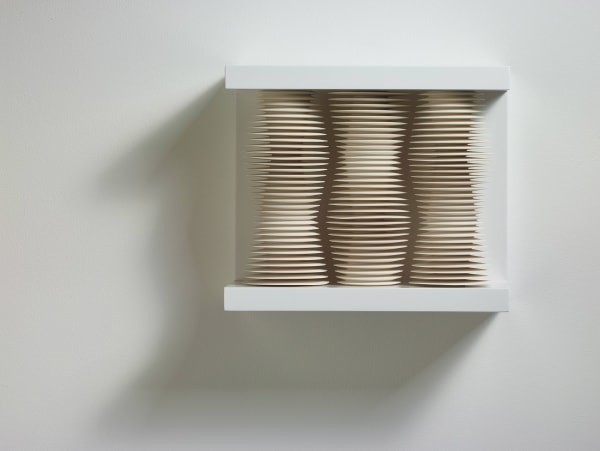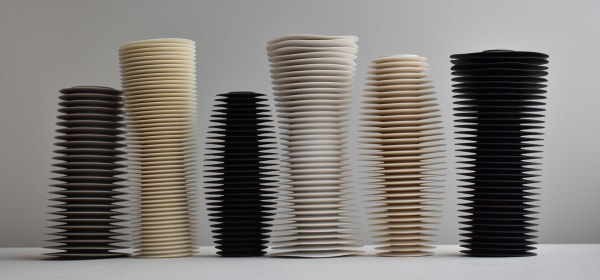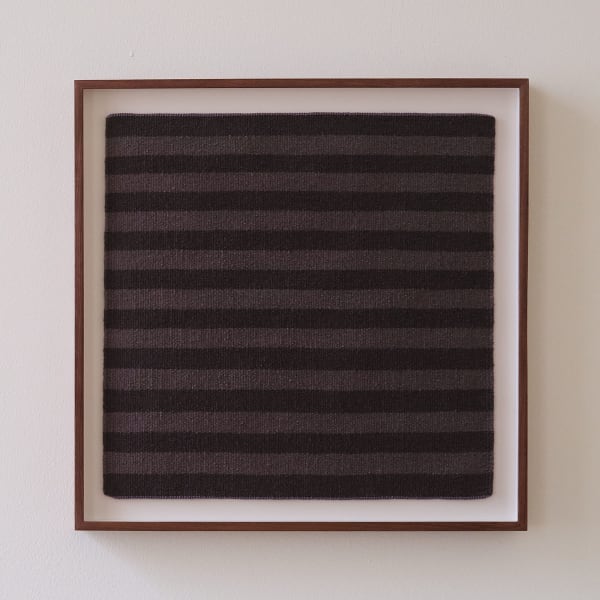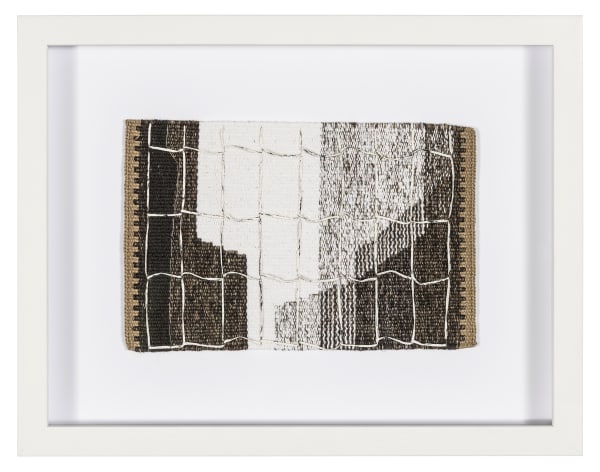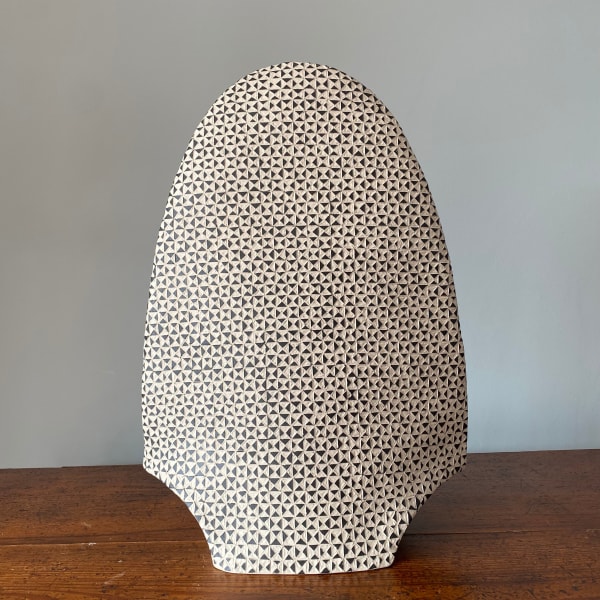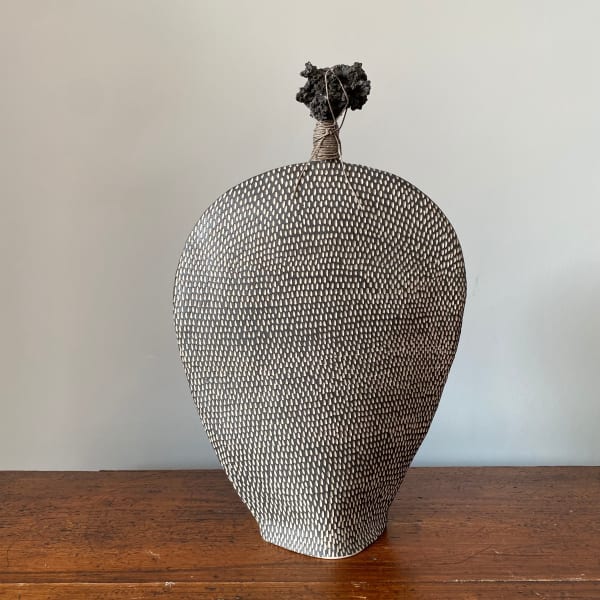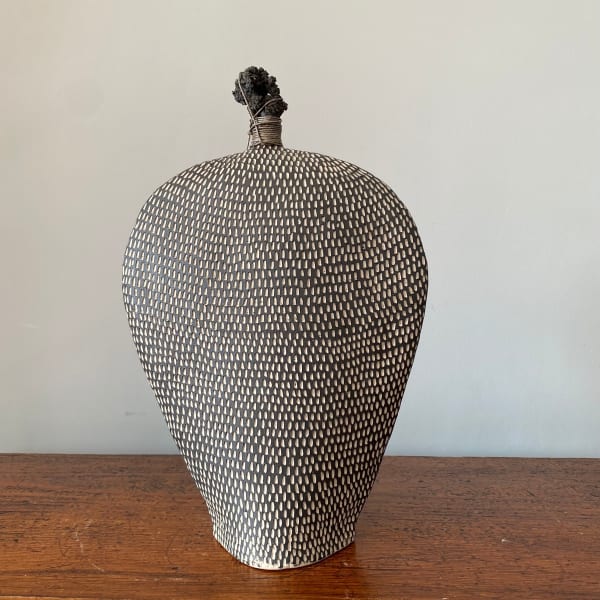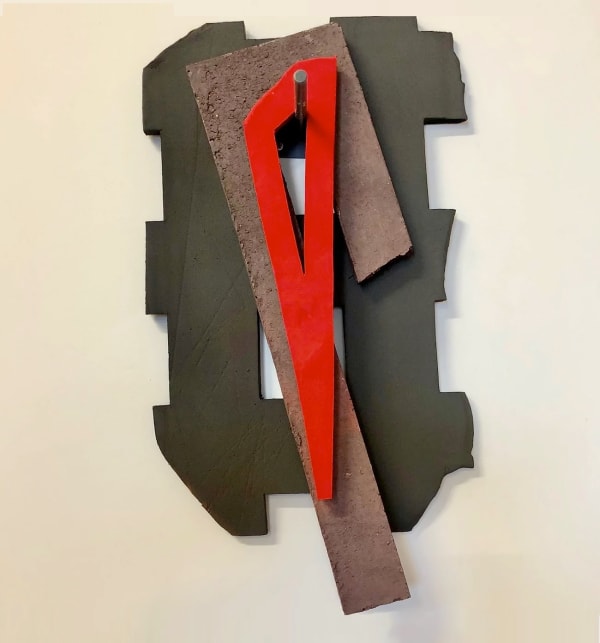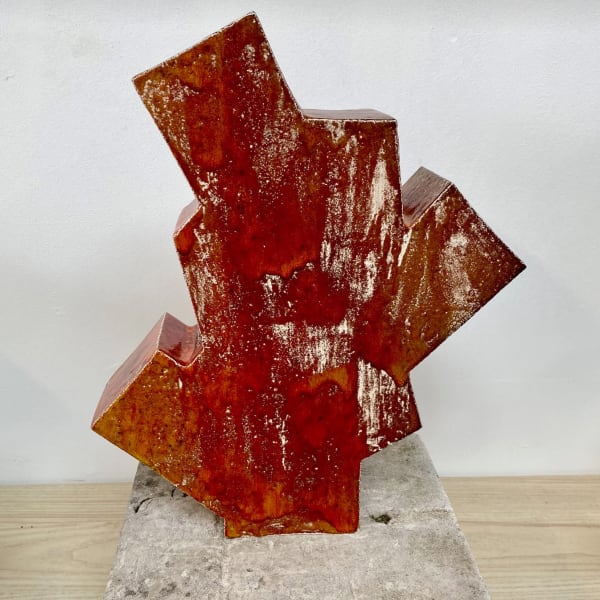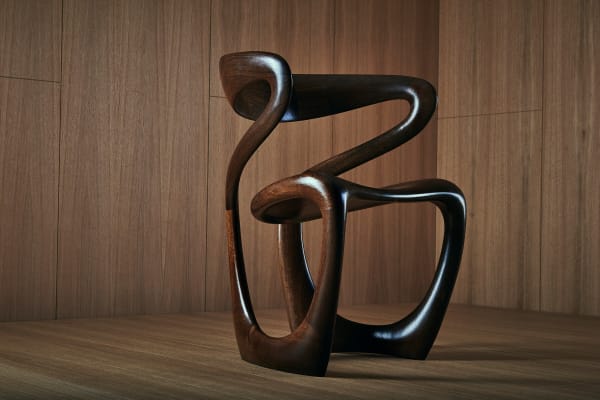Overview
From the 4th - 9th of October Cavaliero Finn will be one of a select group of galleries taking part in Contemporary on the Mezzanine, a new curated addition to the renowned Decorative Fair in Battersea Park, London.
Installation Views
Works
-
 Juliette Bigley, Copper and nickel wallpiece, 2019
Juliette Bigley, Copper and nickel wallpiece, 2019 -
 Juliette Bigley, Planes 3, 2021
Juliette Bigley, Planes 3, 2021 -
 Juliette Bigley, Planes 4, 2021
Juliette Bigley, Planes 4, 2021 -
 Juliette Bigley, Squares Pair, 2018£ 3,300.00
Juliette Bigley, Squares Pair, 2018£ 3,300.00
-
 Juliette Bigley, Steel and silverwallpiece 2, 2019
Juliette Bigley, Steel and silverwallpiece 2, 2019 -
 Matthew Chambers, Nest, 2022 Sold
Matthew Chambers, Nest, 2022 Sold -
 Matthew Chambers, Revolve, 2021
Matthew Chambers, Revolve, 2021 -
 Matthew Chambers, Vessel I, 2022 Sold
Matthew Chambers, Vessel I, 2022 Sold
-
 Nicholas Lees, Framed Triptych 20.08, 2020£ 3,850.00
Nicholas Lees, Framed Triptych 20.08, 2020£ 3,850.00 -
 Nicholas Lees, Six Piece Framed Installation, 21.18, 2021
Nicholas Lees, Six Piece Framed Installation, 21.18, 2021 -
 Caron Penney, Cessation, 2022
Caron Penney, Cessation, 2022 -
 Caron Penney, Reparation, 2022£ 4,650.00
Caron Penney, Reparation, 2022£ 4,650.00
-
 Katharine Swailes, Looking Along, 20
Katharine Swailes, Looking Along, 20 -
 Katharine Swailes, Looking Up, 20
Katharine Swailes, Looking Up, 20 -
 Simon Gaiger, Harbour Form, 2022£ 1,950.00
Simon Gaiger, Harbour Form, 2022£ 1,950.00 -
 Simon Gaiger, Signal, 2017£ 5,880.00
Simon Gaiger, Signal, 2017£ 5,880.00
-
 Sun Kim, Group of Two Geometric Vessels , 2022£ 1,155.00
Sun Kim, Group of Two Geometric Vessels , 2022£ 1,155.00 -
 Sun Kim, Group of Three Geometric Vessels, 2022£ 1,485.00
Sun Kim, Group of Three Geometric Vessels, 2022£ 1,485.00 -
 Björk Haraldsdóttir, Skaldic Verse II, 2022 Sold
Björk Haraldsdóttir, Skaldic Verse II, 2022 Sold -
 Björk Haraldsdóttir, Skaldic Verse I, 2022 Sold
Björk Haraldsdóttir, Skaldic Verse I, 2022 Sold
-
 Björk Haraldsdóttir, Spákona I, 2022 Sold
Björk Haraldsdóttir, Spákona I, 2022 Sold -
 Björk Haraldsdóttir, Spákona II, 2022 Sold
Björk Haraldsdóttir, Spákona II, 2022 Sold -
 Björk Haraldsdóttir, Svartfugl I, 2022 Sold
Björk Haraldsdóttir, Svartfugl I, 2022 Sold -
 Björk Haraldsdóttir, Svartfugl II, 2022 Sold
Björk Haraldsdóttir, Svartfugl II, 2022 Sold
-
 Björk Haraldsdóttir, Svartfugl III, 2022 Sold
Björk Haraldsdóttir, Svartfugl III, 2022 Sold -
 Tim Martin, Wall Assemblage - Black Grid with Red Arrow, 2022
Tim Martin, Wall Assemblage - Black Grid with Red Arrow, 2022 -
 Tim Martin, Wall Assemblage with Blue Line, 2022
Tim Martin, Wall Assemblage with Blue Line, 2022 -
 Tim Martin, Wall Assemblage with Orange Grid, 2022
Tim Martin, Wall Assemblage with Orange Grid, 2022
-
 Tim Martin, Wall Assemblage with Pink Zigzag, 2022
Tim Martin, Wall Assemblage with Pink Zigzag, 2022 -
 Tim Martin, Wall Assemblage with Blue Frame, 2022
Tim Martin, Wall Assemblage with Blue Frame, 2022 -
 Tim Martin, Fire Branch Form, 2022 Sold
Tim Martin, Fire Branch Form, 2022 Sold -
 Tim Martin, Vine Vase, 2022
Tim Martin, Vine Vase, 2022
Press release
The Art of Geometry
Presented by Cavaliero Finn
Contemporary on the Mezzanine
at
the Decorative Fair, Battersea Park
From the 4th - 9th of October 2022 Cavaliero Finn will be one of a select group of galleries taking part in Contemporary on the Mezzanine, a new curated addition to the renowned Decorative Fair in Battersea Park, London.
Exhibiting alongside some of the UK's leading galleries in modern craft and design in this new section of the fair, the gallery will present - The Art of Geometry - a collection of work featuring geometric abstraction inspired by diverse but interrelated references.
For centuries, artists and architects have been inspired by the visual beauty and order that exists in geometry, using it to help the composition of their work. Geometric shapes are some of the strongest forms used in modern art. Artists have studied geometry in order to draw angles, proportion, and perspective, and to illustrate the illusion of realism. Seen in our everyday surroundings, geometry pays tribute to the coming together of art, maths and science. The use of geometry allows artists to explore endless possibilities and complex relationships of what appear to be simple or elemental shapes, lines, and points.
In its presentation of work at The Decorative Fair in Battersea Park, Cavaliero Finn has selected work with geometry at its core. In these works, the artists play with the forms adding colours, changing the values, varying their materials, intersecting lines and overlapping shapes. So often it is as much about the spaces in between as the forms themselves. Open space, or negative space becomes an integral part of the work on show for example with the addition of holes in the case of Matthew Chambers' concentric sculptures. Matthew Chambers' influences and inspirations include, geometric and optical art, constructivist themes, and modern architecture and design. He pursues these interests in an abstract sense by exploring shape and making mathematically constructed pieces in clay, each built up of many different wheel-thrown sections. On completion, each form conveys different and individual properties of space, light, and colour, and sustains an expression of abstract and rhythmical beauty from its pattern of shape.
By the pairing of geometric shapes in Juliette Bigley's sculptural metal sculptures, the artist explores the linear element of geometry, which she says; "started to occur and reoccur in my work, emerging seemingly autonomously in sketchbooks, on models and in photographs. Once I saw a pattern, I began exploring it."
Juliette uses base and precious metals to explore how we experience our emotional and physical place in the world and how we negotiate the interface between the physical world that surrounds us and the intangible worlds of emotion, belief, thought, language and memory. Focussing particularly on lines and thresholds, Juliette's work is sculptural and often comprises groups of objects. Each abstract sculpture, is a physical manifestation of her own abstract thinking.
Two ceramic artists in this presentation bring their previous career experience as trained architects into their work. Björk Haraldsdóttir trained as an architect at the Glasgow School of Art before working as an architect with Richard Rogers and Tim Martin completed his Degree in Architecture from Sydney University, Australia, followed by a Bachelor of Arts in Design Studies from the University of New South Wales, Australia. Both artists retrained as ceramicists and often explore architectural forms in their work. Using geometry as a starting point both artists seek the balance of imperfection and experimentation as evidence of the man made.
Tim Martin is interested in clay as a material that can express structural concepts, connections and networks. His ceramic pieces explore the abstraction of primary forms and frameworks, lines and movement.
Björk Haraldsdóttir says. "My pieces are hand-built vessels which are manifestations of the enduring themes of my experience. They are a conversation between the pseudo-perfection of geometric pattern and the tactile impurity of hand-manipulated clay. They are not sterile and porcelain-perfect but visceral mini monoliths, which have layers of complexity built into superficially simple constructions. I deliberately create warped planes through the careful pattern cutting and jointing of would-be flat slabs so that vessels become intentionally and subtly off-kilter."
Sun Kim's series of ceramic geometric vessels, are individually content as forms but collectively they form a language of work that Sun has been developing and refining for the last few years that plays with geometry and composition.
Sun's making process involves different techniques such as wheel throwing, hand building and assembling. Her aim is to explore three-dimensionality, emphasizing the senses of volume, tension and expansion within a form. The forms appear folded like origami in clay.
Geometry appears frequently in the minimal woven tapestries by Caron Penney with the meticulous repetition of patterns and shapes. Like Piet Mondrian, city planning has played a big part in her work.
She says, "My artistic practice has evolved around a central theme of Manhattan since I first visited the city in 2001. I react to the urban landscape and the systems and patterns that repeat across the streets and avenues. Often these themes respond to the ebb and flow of the daily migration across the City…. The subject matter draws comparisons between societies need to function and the individuals need for identity and their subtle co-existence. This careful balance is represented in the meticulous repetition of patterns and shapes in my tapestries and I reproduce familiar visual signs arranging them in sequences and rhythms."
Weaver Katharine Swailes creates handwoven, abstract, wall based and sculptural tapestries. Drawing inspiration from the vertical landscape of Central Manhattan, the architectural materials inform the use of linen wool and cotton to allude to the reflective glass and steel surfaces and the contrasting concrete and brick. This all gives a sense of uncertainty of what is real and what is reflection. The vertical selvedge edging is typical for this series of works inspired by Manhattan - handwoven tapestry with a supplementary weft.
Geometry and repetition, form, light and shadow play a central part in the hand carved porcelain sculptural works of Nicholas Lees.
Talking about his work Nicholas said: "I interrogate the relationship between what is solid and material and what is numinous and ephemeral. The works explore the uncertainty that rests within boundaries and across thresholds. This uncertainty is key to my enquiry; how to realise the physical and spatial representation of the blurred and uncertain edge - the penumbra of material. Within this body of work this edge can be seen and felt through cast shadows, within the certainty of materiality. The presence of the object on the surface is floating and shifting according to perception."
Simon Gaiger's sculptures are made from materials that he finds around him - forged metal and steel, wood, and sometimes concrete. There is a raw tension of opposing forces in his sculptures, elements strain and pull against each other or balance precipitously. Many of them can be re-configured, changing the interplay of spaces within and around them, inviting participation from the viewer. Where colour is used it unifies form and accentuates the play of light. Talking of his work, Simon says, "Found objects harness the instinctive childlike response to anthropomorphize - to give a new life to a fragment and to enjoy sharing the recognition of that translation with other people or the pleasure of disguising it from them. Taken out of their original context found objects provide powerful abstract elements."
Tom Vaughan explores the linear flow and movement of shapes in his hand-carved S Chair. The chair's form arises directly from the flowing curves of the 'S' shape, transforming the two-dimensional lines of the letter into an elegant functional three-dimensional form.
The beautifully hand-carved chair reflects the highly skilled craftsmanship of this artist's works in wood, metals and plastics. Such pieces highlight his interest in converging traditional craft techniques with contemporary design and manufacturing processes.
Visit Cavaliero Finn on stand M2 within the Contemporary on the Mezzanine section of the Decorative Fair from Tuesday October 4th to Sunday October 9th.
Venue
Opening times
Tuesday 4 October 12pm-8pm
Wednesday 5 October 11am-8pm
Thursday 6 October 11am-8pm
Friday 7 October 11am-7pm
Saturday 8 October 11am-7pm
Sunday 9 October 11am-6pm
Wednesday 5 October 11am-8pm
Thursday 6 October 11am-8pm
Friday 7 October 11am-7pm
Saturday 8 October 11am-7pm
Sunday 9 October 11am-6pm





